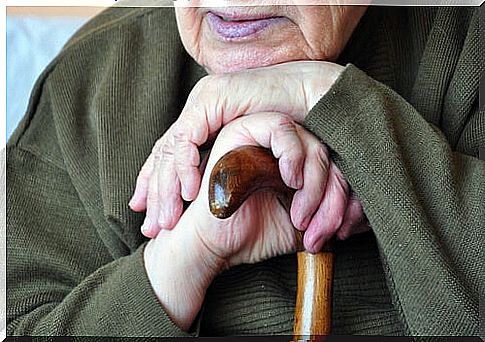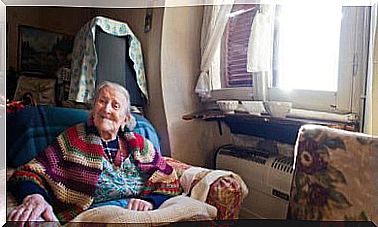Evening Syndrome: An Alteration Typical Of Old Age

Over the years, people see almost all of their habits changed. It is often said that people, as they get older , become more maniacal: with food, cleaning, sleeping … But why? Today, we want to focus on the changes that occur in the structure of sleep in older people with or without dementia. Without forgetting the conduct and behavior generated by the late afternoon. This is called evening, crepuscular, sundown, or sundowning syndrome .
This syndrome could be defined as a state of disorientation that occurs in the late afternoon and extends into the night. It can affect anyone, especially reaching old age, but it is more common in people with some type of dementia.
It is important to mention that, although it can happen to anyone, it only affects a percentage of between 10 and 25% of patients (Lesta and Petocz, 2004).
As Dewing says, cited in González and Cerdeña (2015), it is difficult to narrow down the definition of the term, but what he affirms is that it includes periods of extreme agitation and confusion during the late afternoon or early evening hours of driving. irritability. The patient experiences behavioral changes at the motor level and expressive level.

How it affects people with dementia
According to Echáverri and Erri (2007), it constitutes one of the most common phenomena that occur in geriatric medicine. Although, as we have said previously, there is no consensual definition of sundowning or evening syndrome in the literature, we can call it a psychological-behavioral adverse event. It affects some patients with Alzheimer’s dementia in such a way that they become particularly restless, aggressive, agitated in the last hours of the day.
This syndrome makes the confusional episodes experienced by people with Alzheimer’s disease more noticeable. Thus, it reveals and shows behavioral, emotional and cognitive problems associated with dementia.
Signs and symptoms of evening syndrome
As Gímenez and Macias say, the origin or cause of this syndrome may be a disruption of the circadian rhythms of sleep caused in Alzheimer’s disease, or an alteration in the perception of light associated with old age.
Some of the causes that can cause the appearance of this syndrome could be social isolation and the darkness of the evening, but also polypharmacy, defined by the WHO as the concomitant use of three or more drugs is the concomitant use of three or more drugs. more drugs could have responsibility.
Although there is no clear clinical picture, some of the symptoms that this syndrome presents, according to Gímenez and Macias (2015):
- Increased disorientation.
- Confusion.
- Hyperactivity
- Aggressive behavior.
- Anxiety.
Other symptoms that also appear, according to Echáverri and Erri (2007):
- Quiet monologue, animated discussions, screams, curses, shouts and musings.
- Apathy and depression.
- Headache
- Ambulatory behaviors and an increase in night activity. And therefore insomnia.
- Paranoid thinking and screaming.

recommendations
Some recommendations, in addition to pharmacology, could be the following:
- Acquisition of regular life habits.
- Rule out intercurrent infection, that is, it runs alongside another.
- Keep the person busy through simple activities.
- Do not take daytime naps.
- Decrease the amount of noise.
- Maintain lighting in the facilities.
- Avoid caffeinated drinks.
- Try not to take drugs that can lead to this syndrome-
Thus, we must emphasize that the use of multisensory therapy or snoezelen can have benefits and positive effects when it comes to alleviating the signs and symptoms they present.
In short, there is not much literature that tells us about the sunset syndrome, something that makes treatment and understanding difficult. It is necessary to understand the factors that give rise to the different alterations in order to act accordingly and, thus, to be able to improve the quality of life of patients.









